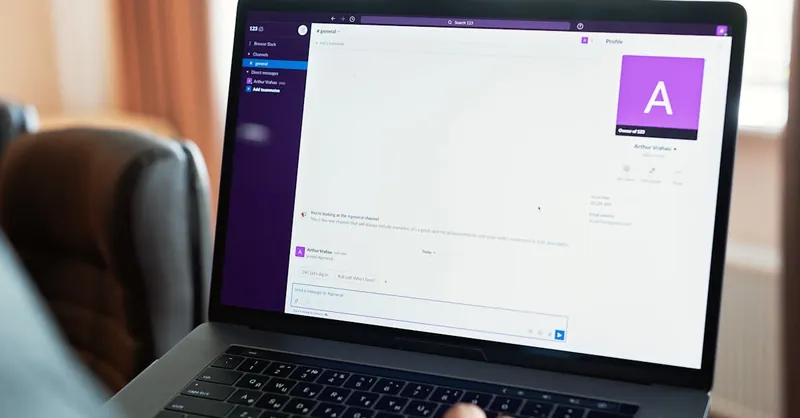Develop Digital Products for Passive Earnings: A Programmer’s Guide
Category: Programming
Unlock Passive Earnings with Digital Products
If you’re a tech-savvy programmer or developer searching for innovative ways to monetize your coding skills beyond the traditional freelance or full-time job, this guide is for you. You likely already know that creating digital products can unlock sustainable passive income streams, but pinpointing the right product type, development approach, and launch strategy aren't always straightforward. Maybe you've tried building apps or plugins before but struggled with marketing, or you’re uncertain where to start for scalable, automated income. This post dives deep into crafting and launching digital products designed specifically for passive earnings—covering everything from ideation and validation to development and distribution. Unlike generic how-to guides, this article is tailored to programmers seeking practical, creative programming projects that not only showcase your expertise but also generate revenue while you focus on your next big idea. By walking through detailed, structured steps and sharing key points extracted from top-ranking resources, you’ll walk away with a blueprint to build digital products that work for you around the clock. Read on to discover proven strategies and creative avenues for turning your coding knowledge into ongoing passive income.
- Unlock Passive Earnings with Digital Products
- Identifying Profitable Digital Product Ideas for Programmers
- Validating Your Digital Product Idea
- Planning and Designing Your Product for Scalability
- Building the Product with Automation and Efficient Coding Practices
- Setting Up Monetization Models for Maximum Passive Revenue
- Marketing Strategies for Passive Income Products
- Deploying and Distributing Your Digital Product for Seamless Access and Recurring Revenue
- Maintaining and Scaling Passive Earnings
- Legal and Financial Considerations for Your Digital Product Business
- Future Trends and Innovations in Digital Products for Programmers
Identifying Profitable Digital Product Ideas for Programmers
As a programmer, your unique technical skills open up a wide array of digital product opportunities that can generate passive income while leveraging your coding expertise. The key to success lies in identifying product types that not only align with your strengths but also meet significant market demand. Here are some of the most lucrative and scalable digital products tailored for developers:
-
SaaS Tools (Software as a Service)
SaaS products offer subscription-based access to web applications solving specific problems. Programmers can create niche tools for project management, analytics, automation, or developer utilities. Due to their recurring revenue model, SaaS platforms are ideal for consistent passive earnings once established. -
Mobile Apps
Whether for iOS or Android, mobile apps targeting underserved niches or providing unique utilities can gain traction quickly. Monetization options include in-app purchases, subscriptions, or ad-based revenue. Programmers with mobile development skills can capitalize on trends like productivity, education, or gaming apps. -
WordPress Plugins and Themes
WordPress powers over 40% of the web, creating huge demand for custom plugins and themes. Developing feature-rich, easy-to-use plugins that solve common website problems or enhance user experience can generate steady sales, especially through marketplaces or direct sales with updates. -
API Services
APIs that provide specialized data, automation, or integrations appeal strongly to businesses and other developers. Launching a valuable API with tiered pricing creates recurring income and positions you as a crucial part of other developers’ tech stacks. -
Coding Templates and Boilerplates
Ready-to-use templates, starter kits, and boilerplate code save other programmers countless hours. Offering these as premium downloads or through subscription libraries helps build a passive revenue stream while reinforcing your reputation in the developer community. -
Educational Content and Courses
Sharing your advanced programming knowledge through eBooks, video tutorials, or full courses attracts programmers eager to learn. Platforms like Udemy, Teachable, or your own site can host your educational products, translating your expertise into scalable income.
Focusing on these product categories increases your chances of success by tapping into proven markets that value accessibility, utility, and developer-focused solutions. By honing in on your personal skills and industry trends, you can craft digital products that generate long-term passive income and scale with minimal ongoing effort.

Image courtesy of Christina Morillo
Validating Your Digital Product Idea
Before investing significant time and resources into building your digital product, validating your idea is crucial to ensure it meets real market needs and has a viable audience. Effective validation minimizes risk, saves development costs, and optimizes your product-market fit, ultimately increasing your chances for passive income success. Here are proven methods to validate your concept early in the process:
1. Competitor Analysis
Start by researching existing products that solve similar problems. Analyze their features, pricing models, customer reviews, and gaps in their offerings. A detailed competitor analysis helps you identify opportunities to differentiate your product or improve on their shortcomings, giving you a competitive edge.
2. Customer Surveys and Interviews
Engage with your target audience by conducting surveys or one-on-one interviews. Use platforms like Google Forms, Typeform, or social media polls to gather insights on their pain points, feature preferences, and willingness to pay. Direct feedback from potential customers provides invaluable validation and guides feature prioritization.
3. Landing Pages with Call-to-Action
Create a simple landing page that highlights your product’s value proposition and core features. Use targeted ads or organic promotion to drive traffic and measure user interest through email sign-ups, pre-orders, or beta requests. The conversion rate of these actions serves as a strong indicator of market demand.
4. Pre-Orders and Crowdfunding
Offering pre-orders or launching a crowdfunding campaign gives concrete proof of customer commitment and generates upfront funding. Platforms like Kickstarter or Indiegogo also facilitate community building and market validation simultaneously, essential for SaaS tools, apps, or specialized APIs.
5. Minimum Viable Product (MVP) Testing
Develop a stripped-down version of your product focusing on the most critical features. Launching an MVP to early adopters allows you to test assumptions, collect usage data, and gather qualitative feedback. This iterative process helps refine your product before a full-scale launch, ensuring better alignment with user needs.
By systematically validating your digital product idea using these methods, you reduce development risks and significantly enhance your chances of creating a product that not only attracts users but drives consistent passive revenue. Focus on getting early feedback and real-world signals to build a scalable product with proven demand.

Image courtesy of Thirdman
Planning and Designing Your Product for Scalability
Achieving passive income through digital products requires more than just building a functional prototype; your product must be architected for scalability, maintainability, and efficient updates. Thoughtful planning and design decisions early in the development lifecycle ensure your product can handle growth in users and features without excessive overhead.
Architectural Decisions for Scalability
Choosing the right architecture is foundational. For SaaS platforms or API services, adopting microservices or modular architectures allows independent scaling of components, making it easier to maintain and update features without downtime. Consider:
- Decoupled Components: Separate frontend, backend, and database concerns to isolate issues and improve maintainability.
- Cloud-Native Deployment: Utilize cloud providers like AWS, Azure, or Google Cloud with auto-scaling groups and serverless options to dynamically handle traffic spikes.
- Load Balancing and Caching: Implement load balancers and caching mechanisms (e.g., Redis, CDN) to reduce latency and improve user experience during growth.
Selecting a Future-Proof Tech Stack
Your technology stack should align with your product’s goals and long-term scalability requirements. Opt for proven, widely supported frameworks and languages that enable rapid development and have robust communities. For instance:
- Backend: Node.js, Python (Django/Flask), or Go for efficiency and scalability
- Frontend: React, Vue.js, or Angular for dynamic user interfaces
- Databases: Choose between relational (PostgreSQL, MySQL) or NoSQL (MongoDB, DynamoDB) based on data complexity and query needs
Avoid overly complex or niche technologies that may introduce maintenance challenges and limit your ability to find support or hire collaborators.
User Experience Design That Supports Growth
A seamless, intuitive user experience (UX) drives adoption and retention, key metrics for passive revenue growth. Prioritize:
- Simplicity: Design interfaces that are easy to navigate, minimizing friction during onboarding and recurring use.
- Responsiveness: Ensure your product performs well across devices and screen sizes to reach wider audiences.
- Accessibility: Incorporate accessibility best practices to serve all users and expand market reach.
- Feedback Loops: Build in analytics and user feedback mechanisms to continually refine your product based on real behaviors.
By embedding scalability into your product’s architecture, tech stack, and UX design from the outset, you not only reduce technical debt but also position your digital product for sustainable growth and low-maintenance passive income generation. Thoughtful design decisions at this stage pay dividends as your product scales and evolves with user demand.

Image courtesy of Mikhail Nilov
Building the Product with Automation and Efficient Coding Practices
Once your digital product idea is validated and the architecture planned, the next critical step is accelerating development while minimizing ongoing maintenance through automation and efficient coding techniques. Leveraging the right frameworks, no-code/low-code tools, reusable modules, and CI/CD pipelines not only speeds up your time-to-market but also reduces the long-term workload, enabling true passive income generation.
Leverage Frameworks and Libraries for Rapid Development
Utilize well-established frameworks and libraries tailored to your product type to avoid reinventing the wheel. For example:
- Web applications: Frameworks like React or Angular for frontend, combined with Express.js or Django for backend, drastically reduce boilerplate code and improve reliability.
- Mobile apps: Cross-platform frameworks such as Flutter or React Native enable you to build iOS and Android apps from a single codebase, saving development and maintenance time.
- APIs: Tools like FastAPI (Python) or NestJS (Node.js) offer built-in support for routing, validation, and security, accelerating API creation with fewer bugs.
Adopting these frameworks enforces standards and best practices, making your codebase easier to maintain and extend as your product scales.
Integrate No-Code and Low-Code Tools to Automate Routine Tasks
To complement traditional development, incorporate no-code/low-code platforms for workflows and integrations, especially when automating repetitive tasks such as onboarding, billing, or data syncing. Popular options include:
- Zapier or Integromat (Make): Automate interactions between your product and third-party services without writing custom integrations.
- Bubble or Adalo: Build entire MVPs or internal admin panels visually with minimal coding.
- Stripe and PayPal integrations: Handle payment processing seamlessly with prebuilt SDKs and dashboards.
Using no-code tools reduces your dependency on manual development cycles, enabling you to focus on core product features while automation handles operational workflows.
Build Reusable and Modular Code
Writing modular, reusable code is essential for long-term maintainability and scalability. Structure your codebase so components and services can be easily reused across projects or product features, reducing duplication and fixing bugs just once. Key practices include:
- Encapsulating functionality into independent modules or packages
- Applying SOLID principles and design patterns to improve flexibility
- Documenting APIs and component interfaces clearly for effortless reuse
Reusable modules also unlock opportunities for creating product extensions or spin-offs, further expanding your passive income streams.
Automate Testing, Deployment, and Monitoring Pipelines
Implementing continuous integration and continuous delivery (CI/CD) pipelines automates testing, building, and deploying your product, ensuring that new updates reach customers quickly and reliably without manual intervention. Essential components include:
- Automated unit and integration tests to catch bugs before deployment
- Build automation tools like GitHub Actions, GitLab CI, or Jenkins to streamline releases
- Monitoring and alerting with tools like Datadog, New Relic, or Sentry to track performance and detect issues instantly
Automation pipelines reduce your operational overhead, allowing you to maintain a high-quality digital product with minimal ongoing effort—an indispensable factor for passive income success.
By strategically combining efficient coding practices, automation frameworks, and no-code solutions, you accelerate development velocity and dramatically cut down the hours spent on maintenance and routine tasks. This approach empowers you to focus on expanding your digital products, optimizing revenue, and achieving sustainable passive earnings from your programming expertise.

Image courtesy of Markus Spiske
Setting Up Monetization Models for Maximum Passive Revenue
After building a scalable, high-quality digital product, the next step is to implement monetization strategies that maximize earnings while minimizing your active involvement. Choosing the right revenue model aligns your product’s value proposition with customer expectations and drives sustainable passive income. Here, we explore the most effective monetization models tailored for digital products created by programmers.
1. Subscription-Based Model
Subscriptions are ideal for SaaS applications, APIs, and membership-based content, providing predictable, recurring revenue streams. By offering tiered plans (e.g., basic, pro, enterprise), you accommodate different user needs and budgets, encouraging upgrades and long-term retention. The key benefits include:
- Steady cash flow enabling continuous improvements
- High customer lifetime value (LTV)
- Opportunities for automated renewal and upsells
Implement seamless subscription management using platforms like Stripe Billing or Paddle to automate invoicing, renewals, and failed payment recovery, reducing manual effort.
2. One-Time Purchases
Digital products such as plugins, themes, templates, or standalone apps often perform well with a one-time purchase model. This approach attracts users who prefer a clear, upfront cost without ongoing payments. To scale passive income with this model:
- Offer valuable product updates and add-ons as separate paid upgrades or bundles
- Use marketplaces (e.g., Envato, Gumroad) or your own website with integrated payment gateways to automate sales and delivery
- Implement licensing restrictions via license keys to protect your product and create premium tiers
While it lacks recurring revenue, one-time sales can generate substantial upfront income and attract a broad customer base.
3. Freemium with Upsells
The freemium model combines free core features with paid premium upgrades, striking a balance between user acquisition and monetization. This is especially effective for apps, SaaS tools, and plugins where users can experience core functionality before converting. Best practices include:
- Clearly highlight premium benefits to encourage upgrading
- Limit free features strategically to demonstrate value without frustrating users
- Automate in-app billing and notifications for upsells through payment SDKs or services
Freemium fosters large user bases, builds trust, and naturally increases paid conversions with minimal ongoing sales efforts.
4. Licensing and White-Labeling
Licensing your software or offering white-label versions lends itself to B2B-focused digital products like APIs and SaaS platforms. This model allows other companies to legally use, customize, or resell your product under their brand, often generating higher revenue per customer. Benefits include:
- Bulk sales or partnership deals leading to substantial passive income
- Reduced marketing needed as partners handle distribution
- Potential for long-term contracts and renewals
Negotiating clear, automated licensing agreements and using license management tools ensures minimal administrative burden.
5. Affiliate and Integration Revenue
If your product complements popular platforms or tools, embedding affiliate marketing or partner integrations can create additional passive revenue streams. For example:
- Embedding affiliate links inside educational content or developer tools
- Partnering with complementary SaaS providers for mutual referrals
- Leveraging API marketplaces that share revenue with developers
This strategy requires minimal upkeep once configured and boosts income without increasing product complexity.
By carefully selecting and combining these monetization models, you can tailor revenue streams that suit your digital product type and target audience while optimizing for passive income. Automate billing, licensing, and upsell workflows wherever possible to reduce active involvement, allowing your programming creations to generate consistent earnings around the clock.

Image courtesy of Christina Morillo
Marketing Strategies for Passive Income Products
Creating a high-quality digital product is just the first step toward building a successful passive income stream. To reach and engage your tech-savvy audience, you need targeted, cost-effective marketing tactics that leverage your understanding of both the product and developer communities. Below are powerful strategies tailored specifically for marketing digital products crafted by programmers.
1. Optimize for SEO to Capture Organic Traffic
Search Engine Optimization (SEO) is foundational for driving long-term, organic traffic to your product pages and content. Focus on:
- Keyword research targeting phrases your ideal customers use, such as “best API for automation,” “WordPress plugin for developers,” or “SaaS productivity tool reviews.”
- Producing in-depth technical blog posts, tutorials, and case studies around your product’s use cases and benefits to improve ranking and establish authority.
- Structuring your website with clean URLs, meta descriptions, and schema markup to enhance visibility in search results.
- Building backlinks from reputable developer blogs, forums, and coding resource sites to boost domain authority.
Employing targeted SEO tactics maximizes discoverability among programmers actively searching for solutions, creating a steady flow of qualified leads with minimal ongoing expense.
2. Leverage Content Marketing to Build Trust
Content marketing engages your audience by providing valuable insights that showcase your product’s benefits indirectly, nurturing user trust and brand loyalty. Consider these content formats:
- Technical tutorials and how-to guides demonstrating the practical application of your product.
- Webinars or live coding sessions that offer free knowledge while soft-selling your digital product.
- Email newsletters sharing development tips, product updates, and exclusive offers to maintain ongoing engagement.
- Creating downloadable assets like checklists, code samples, or whitepapers aligned with your product niche.
By consistently offering helpful content, you position yourself as an expert and encourage organic referrals, fostering passive sales growth.
3. Engage Developer Communities for Authentic Exposure
Active participation in developer forums, open-source groups, and coding platforms is a highly effective, low-cost way to promote your digital products within trusted circles. Key tactics include:
- Sharing useful insights and answering questions on platforms like Stack Overflow, Reddit’s r/programming, or GitHub discussions without overt self-promotion.
- Publishing open-source projects or code snippets related to your product to demonstrate credibility and invite collaboration.
- Hosting or sponsoring hackathons, meetups, or online coding challenges that naturally highlight your tool or service.
- Encouraging satisfied users to share reviews and testimonials in these communities.
Authentic engagement builds goodwill and organic buzz, helping your product gain traction among enthusiastic early adopters who value peer recommendations.
4. Partner with Influencers in the Tech Space
Collaborating with influential developers, bloggers, and content creators amplifies your reach by tapping into their established audiences. To maximize ROI:
- Identify influencers whose followers closely match your target users and who have a genuine interest in technology or programming.
- Offer exclusive access, affiliate commissions, or co-branded content opportunities to encourage authentic endorsements.
- Collaborate on in-depth reviews, tutorial videos, podcasts, or live demos showcasing your product’s unique features and benefits.
- Use tracking links and promo codes to measure conversion effectiveness precisely.
Strategic influencer partnerships combine credibility and reach, accelerating awareness and sales without the high costs of traditional advertising.
5. Utilize Paid Ads with Laser-Focused Targeting
While organic channels are vital, paid advertising can rapidly drive targeted traffic and boost conversions when carefully executed with a focus on efficiency and impact:
- Use Google Ads targeting niche developer keywords for immediate visibility on search results relevant to your product.
- Leverage social media platforms such as LinkedIn, Twitter, and Reddit Ads, where many programmers and tech professionals actively engage.
- Craft ads that highlight your product’s technical advantages, testimonials, or limited-time offers to increase click-through and conversion rates.
- Experiment with retargeting campaigns to nurture visitors who showed interest but did not convert initially.
By combining detailed demographic and interest targeting with compelling creatives, you can keep advertising costs low while driving high-quality leads willing to invest in developer-oriented digital products.
Implementing these SEO tactics, content marketing strategies, community engagement, influencer collaborations, and targeted paid ads creates a holistic marketing funnel tailored for your tech-savvy audience. This multi-channel approach emphasizes low-cost, high-impact methods to grow your passive income streams sustainably, ensuring your programming expertise translates into ongoing revenue with minimal active marketing effort.

Image courtesy of Kindel Media
Deploying and Distributing Your Digital Product for Seamless Access and Recurring Revenue
Once your digital product is developed and monetization models are in place, the critical next step is deploying and distributing your product efficiently to maximize accessibility and sustain passive income streams. Choosing the right platforms and delivery mechanisms ensures your customers enjoy seamless access while you benefit from automated revenue collection and minimal manual overhead.
Optimal Platforms and Marketplaces for Distribution
-
GitHub and Open-Source Hosting
For developer-focused products like APIs, libraries, or templates, GitHub remains the go-to platform to release code, manage versions, and build community trust. Leveraging GitHub Pages or GitHub Actions can automate deployments and offer continuous delivery to users who rely on up-to-date, well-maintained repositories. Integrations with package managers (e.g., npm, PyPI) streamline user installations, enhancing product adoption with minimal friction. -
App Stores: iOS and Android
Mobile apps require distribution through official Apple App Store and Google Play Store channels, which provide the largest audiences and secure payment handling. Follow platform guidelines carefully to pass reviews and automate app updates using CI/CD pipelines integrated with tools like Fastlane. App Store optimizations (ASO)—including keywords, descriptions, and screenshots—boost discoverability for passive downloads and subscriptions. -
SaaS Marketplaces and Cloud Platforms
If you build SaaS solutions or APIs, listing on marketplaces such as the AWS Marketplace, Azure Marketplace, or Google Cloud Marketplace exposes your product to enterprise customers ready to buy cloud-based tools. These platforms offer built-in billing, user management, and compliance features, enabling recurring revenue with minimal administrative effort. Additionally, embedding your SaaS on your own domain with reliable hosting and CDN accelerates user access globally. -
Digital Product Marketplaces and E-commerce Platforms
Marketplaces like Envato, Gumroad, and Paddle specialize in selling plugins, themes, courses, and templates, offering integrated payment processing, licensing management, and automated product delivery. These platforms reduce the technical complexity of distribution, freeing you to focus on product development while they handle checkout, refunds, and VAT compliance, essential for global passive income.
Continuous Deployment Pipelines for Reliable Delivery
Implementing continuous integration and continuous deployment (CI/CD) pipelines is vital for maintaining product quality and pushing updates without manual intervention. Popular tools like GitHub Actions, GitLab CI, CircleCI, or Jenkins automate builds, testing, and releases across environments so customers always receive the latest features and bug fixes promptly.
Key benefits include:
- Reducing downtime and manual deployment errors
- Facilitating rapid iteration and feature rollouts
- Enabling staged rollouts or canary releases for SaaS or mobile apps
- Automatically publishing updated versions to marketplaces and repositories
By combining your CI/CD pipeline with automated notifications (e.g., email or in-app alerts), you keep users engaged and informed about product improvements, enhancing retention.
Delivery Mechanisms Tailored to Customer Convenience
To optimize passive earnings, focus on frictionless access and automated delivery of your digital products:
- Direct downloads with license keys or license servers ensure customers receive updates seamlessly while maintaining piracy controls for plugins, templates, or desktop apps.
- API keys and token-based authentication enable secure subscription access and usage tracking for SaaS products and API services.
- Subscription portals and user dashboards allow customers to manage billing, seats, and entitlements themselves without needing your direct support.
- Webhooks and integration points let third-party tools connect with your product, expanding usability and driving organic customer growth.
Choosing delivery methods that automate fulfillment and empower end-users reduces support overhead while maximizing your ability to generate recurring revenue streams.
By strategically selecting distributed platforms, automating continuous deployment, and implementing user-centric delivery mechanisms, programmers can ensure their digital products reach customers effortlessly. This seamless deployment and distribution infrastructure is a cornerstone for building scalable, passive income streams that grow with minimal intervention, allowing you to focus on innovation and expansion.

Image courtesy of Artem Podrez
Maintaining and Scaling Passive Earnings
Building your digital product is just the beginning—sustaining and scaling your passive income stream requires ongoing attention to product health, customer experience, and infrastructure growth. Successful passive income models depend on monitoring performance, automating support, iterating based on feedback, and scaling resources responsibly as your audience expands.
Monitor Product Health Proactively
Regularly tracking key metrics such as user engagement, churn rates, conversion funnels, and system performance ensures your product remains reliable and continues delivering value. Implement analytics and monitoring tools like Google Analytics, Mixpanel, or application performance monitoring (APM) services such as New Relic or Datadog for real-time insights. Early detection of issues allows swift resolution, which minimizes downtime and customer dissatisfaction—critical factors for maintaining recurring revenue.
Automate Customer Support to Reduce Active Involvement
Handling support manually can quickly erode your passive income by consuming time and energy. To keep support scalable and low-effort, implement automation strategies including:
- AI-powered chatbots for instant responses to common questions
- Comprehensive self-service knowledge bases with FAQs, tutorials, and troubleshooting guides
- Automated ticket routing and prioritization systems to escalate only critical issues
- Email autoresponders and in-app messaging triggered by user behavior
Effective support automation improves customer satisfaction and retention while freeing you to focus on product innovation or new passive income streams.
Iterate Your Product Based on Customer Feedback
User feedback is a goldmine for enhancing product-market fit and boosting customer lifetime value. Establish structured feedback channels such as in-app surveys, community forums, or beta testing groups to gather insights continuously. Prioritize feature requests and bug fixes that have the highest impact on user experience or revenue growth. Agile, incremental releases driven by real customer data keep your product relevant and competitive, further solidifying your passive income foundation.
Scale Your Infrastructure Responsibly
As your user base grows, responsibly scaling your cloud infrastructure is vital to maintain performance without overspending. Leverage auto-scaling and serverless architectures offered by cloud providers like AWS, Azure, or Google Cloud to dynamically allocate resources based on demand. Employ cost monitoring and optimization tools to identify unused resources, avoid overprovisioning, and forecast expenses accurately. Planning for scalability upfront helps you absorb traffic spikes smoothly, supports a growing customer base, and preserves profit margins.
By combining proactive monitoring, automated customer support, user-driven iteration, and smart infrastructure scaling, you ensure your digital product not only generates passive income but continues to grow sustainably over time. This holistic maintenance approach transforms your initial development investment into a thriving, hands-off revenue machine fueled by continual improvement and operational efficiency.

Image courtesy of RDNE Stock project
Legal and Financial Considerations for Your Digital Product Business
When developing digital products for passive income, addressing legal and financial aspects is essential to safeguard your business, ensure compliance, and maintain smooth revenue flow. Ignoring these critical components can lead to costly disputes, tax issues, or regulatory penalties that disrupt your passive earnings.
Licensing and Intellectual Property Protection
Clear licensing agreements define how customers can use your software, plugins, or digital assets, protecting your intellectual property rights and revenue. Consider:
- Choosing the right license type—whether proprietary, open source, or hybrid—to align with your business goals and product distribution model.
- Implementing end-user license agreements (EULAs) that specify usage terms, restrictions, and liabilities, reducing legal risks.
- Using license key systems or software activation servers to control unauthorized use and manage premium access effectively.
Protecting your code and digital assets through precise licensing helps prevent piracy and unauthorized redistribution, ensuring your passive income streams remain secure.
Taxes and Invoicing Compliance
Running a digital product business entails tax obligations that vary by country and region, especially for online sales and subscriptions. Key practices include:
- Registering your business legally to comply with local regulations and tax authorities.
- Understanding sales tax, VAT, or GST requirements for digital goods, which often depend on the customer’s location.
- Leveraging automated invoicing and payment systems integrated with your monetization platform (e.g., Stripe, Paddle) to handle tax calculations, invoice generation, and remittance.
- Maintaining accurate records of revenue and expenses for filing returns and audits.
Being proactive about tax compliance avoids costly fines and facilitates smooth business operations for sustained passive earnings.
GDPR and Data Privacy Compliance
If your digital product collects, processes, or stores personal data of users—especially from the EU or California—ensuring data privacy compliance is non-negotiable. Essential steps include:
- Implementing a clear Privacy Policy explaining data collection, usage, storage, and sharing practices.
- Providing users with mechanisms to consent to data use, access their data, or request deletion, in line with GDPR, CCPA, or other relevant regulations.
- Securing customer data using industry-standard encryption and security measures to prevent breaches.
- Regularly reviewing and updating compliance policies as legislation evolves.
Compliance not only protects your users but also enhances your product’s credibility and trustworthiness, positively impacting adoption and passive sales.
Contracts and Agreements to Protect Your Business
Well-drafted contracts and agreements guard your interests when dealing with partners, clients, or contractors associated with your digital product business. Consider:
- Service agreements for outsourcing development, design, or marketing work specifying deliverables, timelines, and payment terms.
- Non-disclosure agreements (NDAs) to protect proprietary ideas and sensitive information.
- Clear terms of service (ToS) that outline user responsibilities, limitations of liability, and dispute resolution processes.
Having robust legal documentation reduces the risk of misunderstandings, legal disputes, and business interruptions, enabling your passive income operations to run smoothly.
By prioritizing these legal and financial considerations—from licensing and taxes to GDPR compliance and contracts—you lay a solid foundation for a compliant, protected, and professionally managed digital product business. This legal vigilance ensures uninterrupted passive income flow and fosters trust among customers and partners alike.

Image courtesy of Mikhail Nilov
Future Trends and Innovations in Digital Products for Programmers
As the tech landscape evolves rapidly, staying ahead by leveraging emerging technologies can unlock new passive income opportunities for programmers. Innovations such as AI-powered coding assistants, blockchain-based applications, and no-code/low-code SaaS builders are redefining how developers create, distribute, and monetize digital products. Understanding these trends enables you to build more competitive, scalable offerings that attract modern users and generate consistent revenue streams.
AI-Powered Coding Assistants and Automation
With advances in artificial intelligence and machine learning, AI-driven development tools are revolutionizing programming workflows. AI coding assistants like GitHub Copilot, Tabnine, and OpenAI Codex can:
- Accelerate code generation and debugging, significantly reducing development time.
- Enable creation of smarter, context-aware software that adapts to user needs.
- Offer personalized code suggestions and automated testing frameworks that improve product reliability.
Programmers can leverage AI not only to streamline their development processes but also to build AI-powered digital products such as intelligent plugins, automated workflow bots, or AI-enhanced SaaS features. Incorporating AI enhances product value, creating differentiated solutions that command premium subscriptions or licensing fees—ideal for sustainable passive income.
Blockchain-Based Products and Decentralized Applications (dApps)
Blockchain technology introduces novel possibilities for digital product creators, especially in areas demanding security, transparency, and decentralization. Emerging blockchain use cases for programmers include:
- Decentralized Finance (DeFi) apps: Platforms enabling peer-to-peer lending, trading, or payments without intermediaries.
- NFT Marketplaces and Digital Asset Management: Tools to mint, manage, and trade non-fungible tokens offer monetization options through transaction fees or subscriptions.
- Smart Contract Development: Automated agreements that trigger actions based on predefined conditions create new business models and revenue streams.
- Blockchain-as-a-Service (BaaS): APIs and SaaS platforms facilitating blockchain integration for mainstream businesses.
Developing blockchain-based digital products allows programmers to tap into a growing market hungry for innovative, trustless applications. Monetization can be systematized through token economies, usage fees, or premium features, fostering recurring passive earnings with a cutting-edge appeal.
No-Code and Low-Code SaaS Builders Democratizing Development
The rise of no-code and low-code platforms is transforming how digital products are created, enabling programmers to rapidly prototype and deploy SaaS offerings with minimal hand-coding. Platforms like Bubble, Webflow, and Airtable empower developers to:
- Build feature-rich applications faster by visually assembling workflows and interfaces.
- Focus on unique selling propositions such as custom integrations, analytics, or automation rather than foundational tech stack setup.
- Launch MVPs quickly to validate market demand and iterate based on user feedback.
For programmers targeting passive income, these tools open new frontiers where lightweight, customizable SaaS products can be built, scaled, and monetized with dramatically reduced development overhead. Combining no-code builders with traditional code extensions also enhances flexibility and sustainability of revenue streams.
Embracing these future trends and innovations in digital product development allows programmers to harness state-of-the-art technologies, streamline creation, and deliver exceptional value. Whether integrating AI capabilities, exploring blockchain ecosystems, or utilizing no-code SaaS builders, adopting these cutting-edge approaches positions your products to capture emerging markets and generate robust passive income well into the future.

Image courtesy of ThisIsEngineering
